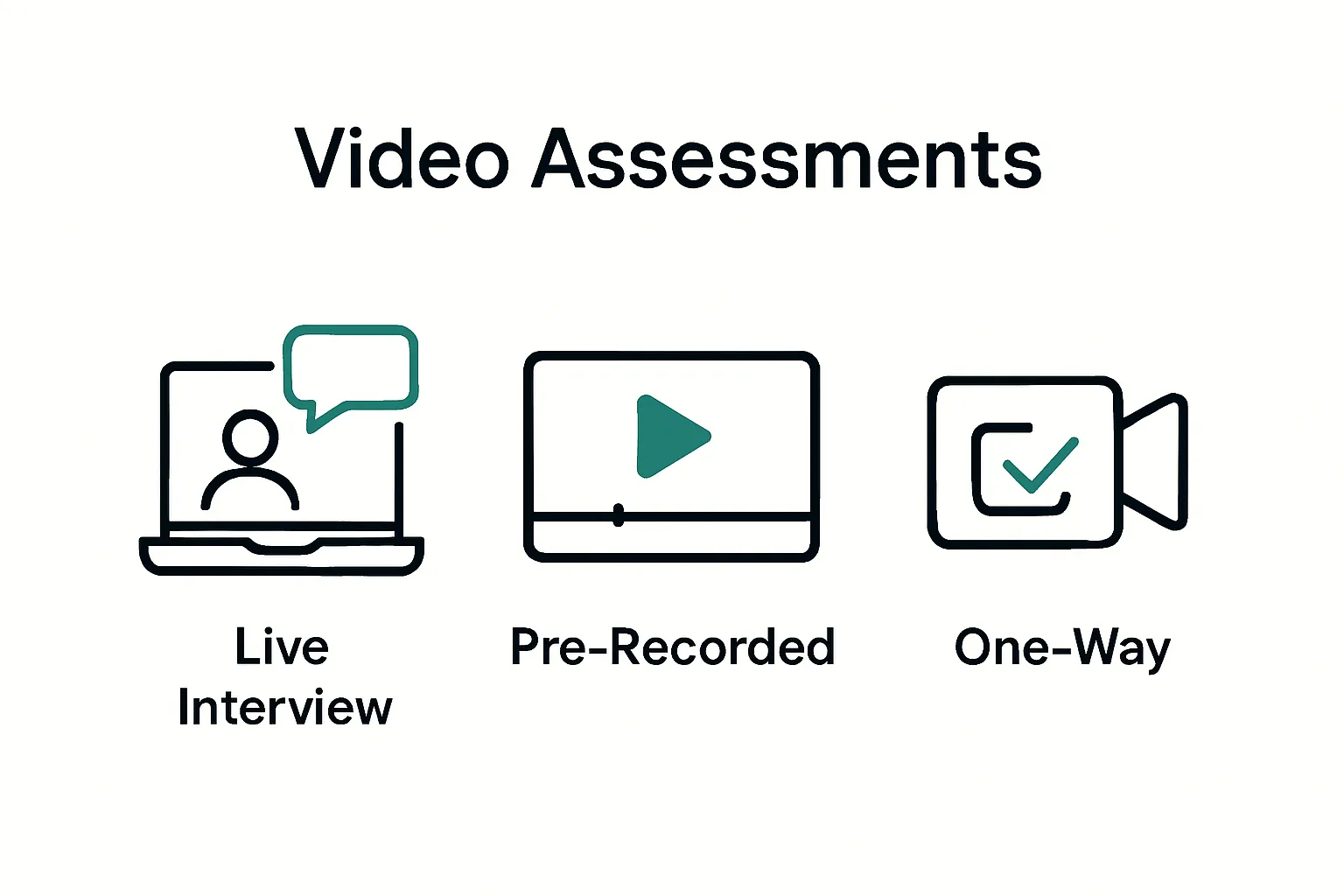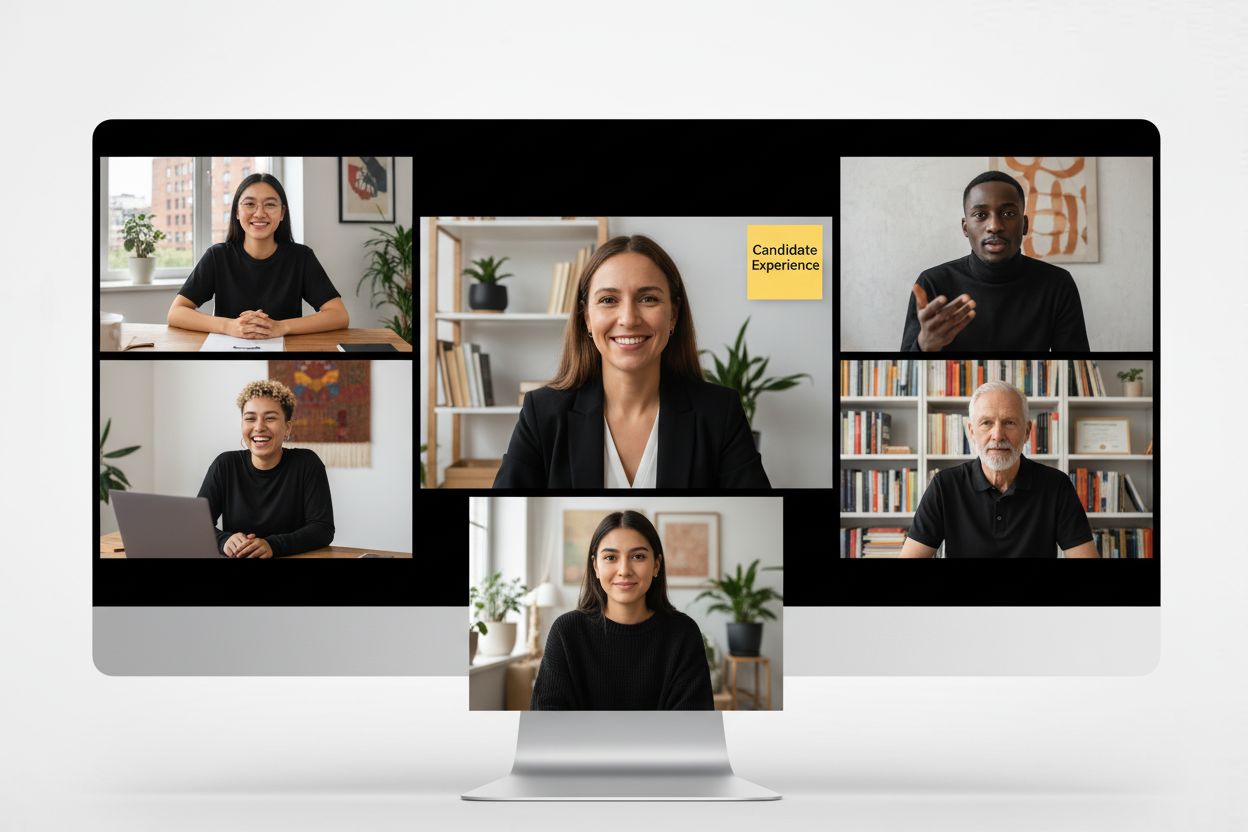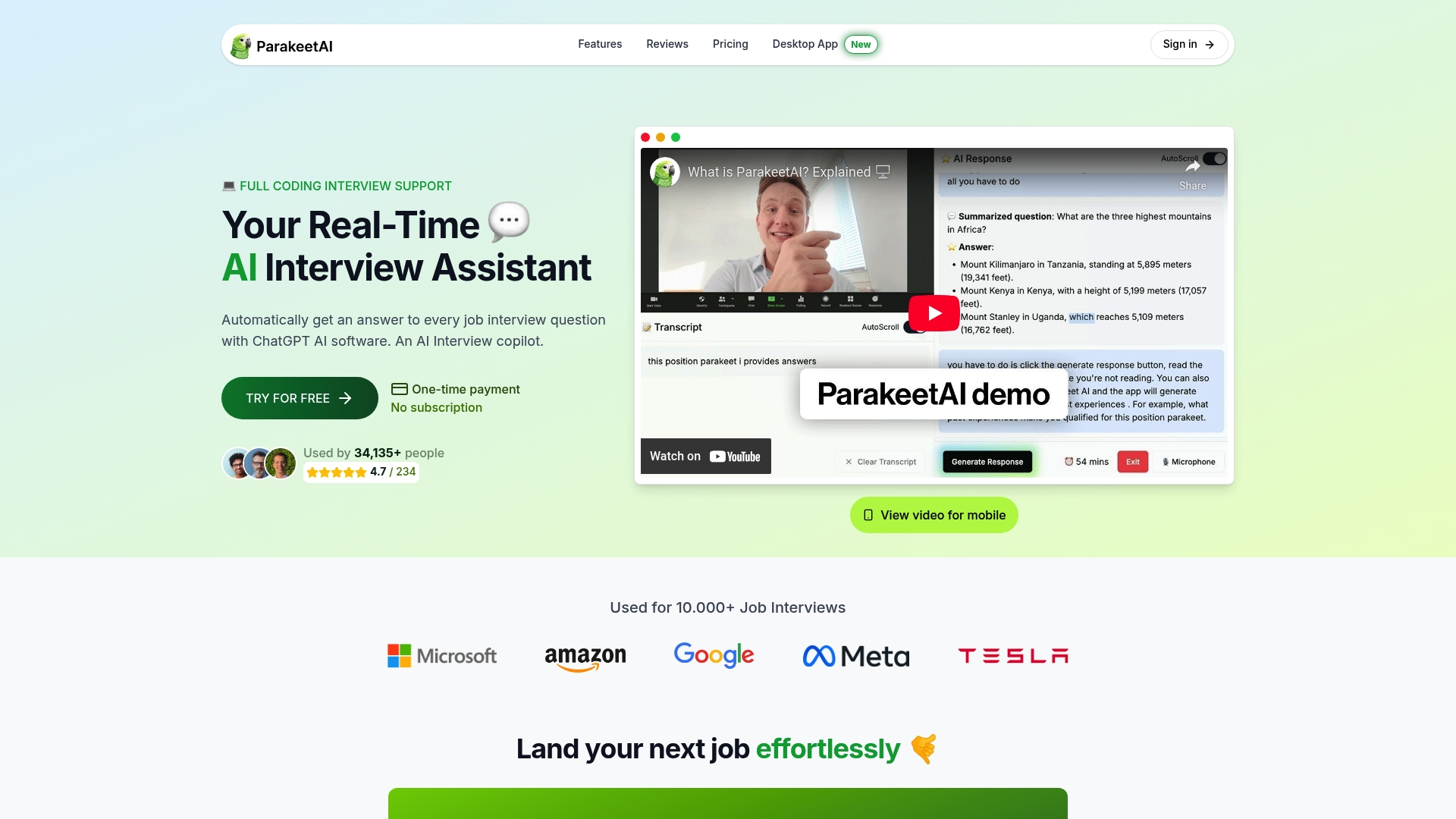What is Virtual Interviewing? Understanding the Basics

Virtual interviewing has taken over how companies find new talent and job seekers land opportunities. But while most people focus on the convenience of meeting online, the real surprise comes from the numbers. Companies that use virtual interviews can cut hiring expenses by up to 40 percent according to Gartner. That shift is not just about tech. It is changing who gets hired and how fast it all happens.
Table of Contents
- Defining Virtual Interviewing: Key Components And Formats
- The Significance Of Virtual Interviewing In Modern Recruitment
- How Virtual Interviewing Works: Technology And Processes
- Key Concepts And Best Practices In Virtual Interviewing
Quick Summary
| Takeaway | Explanation |
|---|---|
| Embrace diverse interview formats | Explore live, pre-recorded, and one-way interviews to enhance recruitment flexibility. |
| Leverage technology for recruitment | Utilize video conferencing tools and integrated platforms to improve hiring efficiency and reach. |
| Prioritize candidate accessibility | Make interview opportunities available for candidates with scheduling constraints and mobility issues. |
| Maximize professional digital presence | Create a suitable online environment with attention to background, attire, and technology for virtual interviews. |
| Enhance communication skills | Use clear speech, active listening, and engaged body language to compensate for lack of physical presence in interviews. |
Defining Virtual Interviewing: Key Components and Formats
Virtual interviewing represents a modern recruitment approach where job candidates and employers interact remotely using digital communication technologies. Unlike traditional face-to-face interviews, virtual interviews leverage video conferencing, specialized platforms, and online communication tools to facilitate professional interactions without physical presence.
Core Technology Platforms
Virtual interviews rely on sophisticated digital platforms that simulate traditional interview environments. These technologies enable real-time video communication, screen sharing, and interactive features that closely mimic in-person interactions. Employers now use specialized software that supports multiple interview formats, including live video interviews, pre-recorded video assessments, and interactive online screening processes.
The primary technologies supporting virtual interviewing include:
- Video conferencing tools like Zoom and Microsoft Teams
- Dedicated recruitment platforms with integrated interviewing capabilities
- Cloud-based communication systems designed for professional interactions
Interview Format Variations
Virtual interviewing encompasses several distinct formats, each serving unique recruitment objectives. According to LinkedIn’s Talent Solutions Report, companies are increasingly adopting flexible interview approaches that accommodate diverse candidate experiences and organizational needs.
These formats include:
- Live Video Interviews: Real-time interactions where candidates and interviewers communicate directly through video platforms
- Pre-Recorded Video Interviews: Candidates record responses to predetermined questions, allowing recruiters to review submissions asynchronously
- One-Way Video Assessments: Structured interviews where candidates respond to specific prompts without direct interaction
By understanding these virtual interviewing components, job seekers and employers can effectively navigate modern recruitment strategies.
Below is a table comparing the main formats of virtual interviews, outlining their characteristics and use cases for quick reference.
| Interview Format | Description | Typical Use Case |
|---|---|---|
| Live Video Interview | Real-time video conversation between candidate and interviewer | Traditional role interviews, higher engagement |
| Pre-Recorded Video Interview | Candidate records answers to set questions for later review | Initial screening, large candidate pools |
| One-Way Video Assessment | Structured prompts, candidate responds without direct interviewer presence | Skills/fit evaluations, asynchronous screening |

Learn more about AI-powered interview preparation to enhance your virtual interview performance and increase your chances of success.
The Significance of Virtual Interviewing in Modern Recruitment
Virtual interviewing has emerged as a transformative strategy in talent acquisition, fundamentally reshaping how organizations recruit and evaluate potential candidates. This innovative approach transcends traditional recruitment boundaries, offering unprecedented flexibility and efficiency in the hiring process.
Economic and Organizational Benefits
The economic implications of virtual interviewing are profound. By eliminating geographical constraints and reducing logistical expenses, companies can access a broader talent pool while significantly cutting recruitment costs. According to Gartner’s Workforce Trends Report, organizations adopting virtual interviewing techniques can reduce hiring expenses by up to 40% and decrease time-to-hire metrics.
Key economic advantages include:
The table below summarizes key economic and organizational benefits of virtual interviewing as discussed in the article.
| Benefit | Explanation |
|---|---|
| Reduced Travel and Accommodation Costs | Eliminates expenses for both candidates and recruiters traveling |
| Expanded Geographical Reach | Allows access to talent beyond local regions |
| Faster and More Efficient Processes | Streamlines screening, interviews, and evaluations |
| Lower Overall Recruitment Expenses | Companies can cut hiring expenses by up to 40 percent |
- Reduced travel and accommodation expenses for candidates and recruiters
- Expanded geographical reach for talent acquisition
- More efficient screening and evaluation processes
Candidate Experience and Accessibility
Virtual interviewing democratizes job application processes, making professional opportunities more accessible. Candidates from diverse backgrounds, including those with mobility limitations, remote locations, or complex scheduling constraints, can now participate in interview processes without significant barriers. McKinsey’s Diversity in Hiring Research highlights that inclusive recruitment technologies can broaden organizational talent pipelines and support more equitable hiring practices.
The technological evolution has transformed candidate experiences by:

- Providing convenient interview scheduling
- Reducing geographical and mobility barriers
- Enabling more flexible interaction formats
By integrating advanced technologies, learn how AI can optimize your interview preparation and help you navigate the complexities of modern recruitment landscapes. Virtual interviewing represents not just a technological shift, but a fundamental reimagining of professional talent acquisition strategies.
How Virtual Interviewing Works: Technology and Processes
Virtual interviewing combines sophisticated digital technologies and strategic communication protocols to recreate professional interaction environments. This complex process involves multiple technological components and procedural frameworks designed to simulate traditional face-to-face interview experiences while leveraging digital communication advantages.
Technical Infrastructure
The technological backbone of virtual interviewing encompasses robust digital platforms and communication tools that enable seamless remote interactions. According to Deloitte’s Digital Transformation Report, modern virtual interviewing systems integrate advanced features like real-time video streaming, automated candidate screening, and interactive assessment capabilities.
Critical technological components include:
- High-definition video conferencing systems
- Secure data transmission protocols
- Advanced audio and visual synchronization technologies
- Integrated candidate management software
Interview Workflow Mechanisms
Virtual interviewing processes typically follow structured workflows that standardize candidate evaluation while maintaining flexibility. Harvard Business Review’s Recruitment Technology Analysis highlights how these mechanisms enable recruiters to conduct comprehensive candidate assessments through multiple interaction stages.
Standard virtual interview workflows generally encompass:
- Initial digital application submission
- Automated resume screening
- Preliminary video or asynchronous assessments
- Live interactive interview sessions
- Post-interview evaluation and feedback
Discover how AI can enhance your interview preparation and help you navigate the intricate landscape of modern recruitment technologies. Virtual interviewing represents a sophisticated intersection of human judgment and technological innovation, transforming traditional hiring paradigms through intelligent, efficient communication frameworks.
Key Concepts and Best Practices in Virtual Interviewing
Virtual interviewing requires a nuanced understanding of digital communication protocols and professional presentation strategies. Success in this modern recruitment landscape demands more than technical proficiency, encompassing sophisticated interpersonal skills adapted to digital environments.
Professional Digital Presentation
Effective virtual interviewing hinges on creating a professional digital persona that translates traditional interview etiquette into online interactions. According to Forbes’ Career Development Research, candidates must carefully curate their digital presence, considering background, lighting, audio quality, and visual presentation.
Critical elements of professional digital presentation include:
The table below outlines essential components for a professional digital presentation during virtual interviews.
| Element | Best Practice Example |
|---|---|
| Background | High-quality, neutral, distraction-free space |
| Attire | Industry-appropriate professional clothing |
| Technology | Stable internet, functional webcam/microphone |
| Camera Position/Lighting | Eye-level camera, well-lit environment |
| Minimizing Interruptions | Silence devices, inform others in your space |
- High-quality, neutral background environment
- Professional attire appropriate for the industry
- Stable internet connection and functional technology
- Proper camera positioning and lighting
- Minimizing potential digital interruptions
Communication and Engagement Strategies
Virtual interviews require specialized communication techniques that compensate for the absence of physical proximity. Stanford University’s Communication Research emphasizes the importance of intentional non-verbal communication and active engagement through digital platforms.
Key communication strategies involve:
- Maintaining direct eye contact with camera
- Speaking clearly and at an appropriate pace
- Using engaged body language
- Demonstrating active listening skills
- Preparing concise, articulate responses
Explore advanced AI-powered interview preparation techniques to refine your virtual interviewing skills and distinguish yourself in competitive professional landscapes. Virtual interviewing is not just a technological adaptation but a sophisticated communication art that demands continuous learning and strategic personal branding.
Transform Your Virtual Interview Performance with Real-Time AI Support
Stepping into a virtual interview can feel overwhelming. The article explains how today’s video interviews depend on sharp digital communication, clear articulation, and managing technology all at once. It is stressful trying to look confident, respond well to unexpected questions, and stay focused on every detail of your virtual presentation. If you feel uncertain about how to handle these demands or worry about missing your chance to impress, you are not alone.

You do not have to tackle online interviews on your own. Parakeet AI offers a real-time AI job interview assistant that listens and helps you answer any question using smart, instant technology. Give yourself the advantage of a digital coach that elevates your responses and reduces your anxiety. If you want to feel prepared and confident in your next interview, explore how our AI assistant works and see for yourself how easy it is to boost your virtual interview skills right now.
Frequently Asked Questions
What is virtual interviewing?
Virtual interviewing is a modern recruitment approach where job candidates and employers interact remotely using digital communication technologies like video conferencing and specialized platforms.
What are the key components of virtual interviewing?
The key components include video conferencing tools, dedicated recruitment platforms, and cloud-based communication systems that facilitate real-time interactions and assessments without the need for physical presence.
What are the different formats of virtual interviews?
The different formats of virtual interviews include live video interviews, pre-recorded video interviews, and one-way video assessments, each serving distinct recruitment objectives.
How does virtual interviewing benefit candidates?
Virtual interviewing makes professional opportunities more accessible by allowing candidates from diverse backgrounds and locations to participate without significant barriers, leading to a more inclusive recruitment process.




